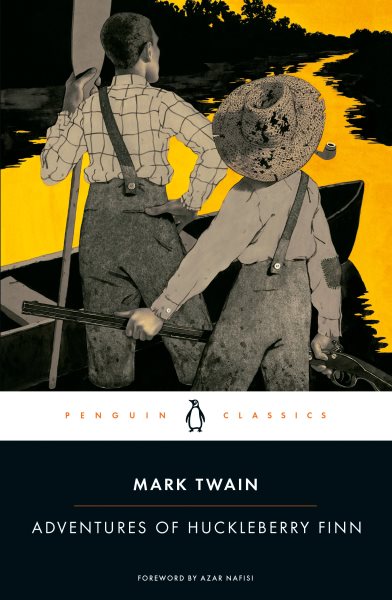Biblio File
Beginnings in Endings: Books for the New Year
Spoiler Alert: Reading this post and following the embedded links might spoil the endings of these books.
Some stories come to definitive ends: a return home after years of voyaging; a long-awaited marriage (or several); a tragic death (or many). Others end in suspense, to be continued or completed in later volumes. Still others end in ambiguity, leaving the characters’ lives or futures shrouded in uncertainty. But some books end with a definitive beginning, concluding one narrative by placing a character at the start of another: a new journey or stage of life. As we approach the closing of one year and the opening of another, here are a few books whose ends (to paraphrase T. S. Eliot) contain their beginnings.

A Doll’s House, by Henrik Ibsen, ends with a startling combination of closure and crisis. Many of the concrete problems faced by the characters are overcome in one way or another by the conclusion of the play. A secret is revealed and forgiven; former lovers are reunited; a threat of blackmail is retracted. However, through the events that resolve these immediate plot tensions, a more fundamental one takes shape: Nora realizes that her entire marriage has been built on illusions, and that she has been “living with a stranger” for years. The final sound of the play, a slamming door, announces both a devastating exit from her old life and an uncertain entrance into her new one.

Often an author will use a marriage or an engagement to complete a story’s narrative arc. As Mark Twain wrote at the end of The Adventures of Tom Sawyer, “When one writes a novel about grown people, he knows exactly where to stop—that is, with a marriage.” William Faulkner’s As I Lay Dying does end with a marriage, but it is not the typical sort that wraps up a story neatly. After a long trip involving various absurd, grotesque, and tragic obstacles, the Bundrens finally reach their destination and succeed in burying their deceased wife and mother, Addie. Any peace that the closing of this chapter of their lives may bring is marred when Mr. Bundren suddenly announces the opening of a new one. In the last line of the novel, he introduces his children to a woman they have never seen before: “‘Meet Mrs. Bundren,’ he says.”

The last chapter of Fyodor Dostoyevsky’s Crime and Punishment seems to bring the story to a tidy conclusion: after hundreds of pages of psychological torment, Raskolnikov finally confesses to the murders he has committed. The book’s epilogue, however, reveals that this confession is only the beginning of a much longer journey of redemption. In a Siberian prison, attended by the loyal Sonia, he must face the enduring effects of his terrible crimes. “That is the beginning of a new story, though; the story of a man’s gradual renewal and rebirth, of his gradual transition from one world to another…”

Ignatius Reilly, too, begins a “transition from one world to another” at the end of John Kennedy Toole's posthumous masterpiece, A Confederacy of Dunces. After causing much chaos and trauma through various failed idealistic quests, the buffoonish man faces the prospect of being thrown into a mental institution. Salvation arrives in the form of his estranged ex-girlfriend Myrna Minkoff, “a loud, offensive maiden from the Bronx.” Ignatius succeeds in convincing Myrna to drive him from New Orleans to New York—the very epicenter of the “materialistic worldview” against which he has been fruitlessly crusading for years. The book ends with the bizarre pair speeding north. “Now that Fortuna had saved him from one cycle, where would she spin him now?”

Chronologically, The Adventures of Huckleberry Finn begins where The Adventures of Tom Sawyer ends: with the Widow Douglas and Miss Watson generously bringing the homeless Huck into their care. Of course, this arrangement does not last long, and Huck spends most of the book traveling down the Mississippi with the escaped slave Jim. On the novel’s final page, when he is once more threatened with an end to his freedom, Huck plans instead to continue his life of roaming. “But I reckon I got to light out for the territory ahead of the rest, because Aunt Sally she’s going to adopt me and sivilize me, and I can’t stand it. I been there before.”
Read E-Books with SimplyE
 With your library card, it's easier than ever to choose from more than 300,000 e-books on SimplyE, The New York Public Library's free e-reader app. Gain access to digital resources for all ages, including e-books, audiobooks, databases, and more.
With your library card, it's easier than ever to choose from more than 300,000 e-books on SimplyE, The New York Public Library's free e-reader app. Gain access to digital resources for all ages, including e-books, audiobooks, databases, and more.
If you don’t have an NYPL library card, New York State residents can apply for a digital card online or through SimplyE (available on the App Store or Google Play).
Need more help? Read our guide to using SimplyE.